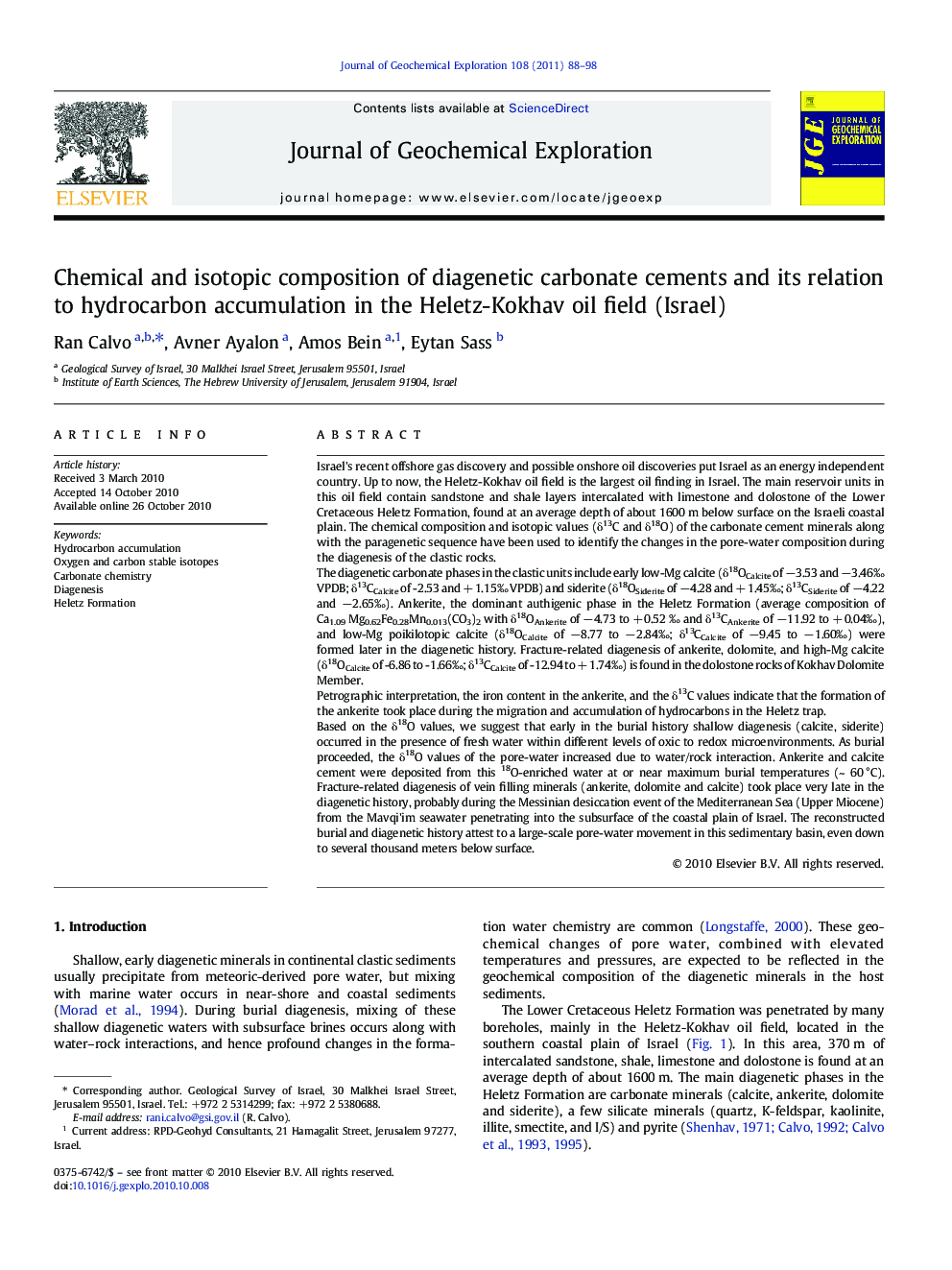| کد مقاله | کد نشریه | سال انتشار | مقاله انگلیسی | نسخه تمام متن |
|---|---|---|---|---|
| 4457852 | 1312638 | 2011 | 11 صفحه PDF | دانلود رایگان |

Israel's recent offshore gas discovery and possible onshore oil discoveries put Israel as an energy independent country. Up to now, the Heletz-Kokhav oil field is the largest oil finding in Israel. The main reservoir units in this oil field contain sandstone and shale layers intercalated with limestone and dolostone of the Lower Cretaceous Heletz Formation, found at an average depth of about 1600 m below surface on the Israeli coastal plain. The chemical composition and isotopic values (δ13C and δ18O) of the carbonate cement minerals along with the paragenetic sequence have been used to identify the changes in the pore-water composition during the diagenesis of the clastic rocks.The diagenetic carbonate phases in the clastic units include early low-Mg calcite (δ18OCalcite of −3.53 and −3.46‰ VPDB; δ13CCalcite of -2.53 and + 1.15‰ VPDB) and siderite (δ18OSiderite of −4.28 and + 1.45‰; δ13CSiderite of −4.22 and −2.65‰). Ankerite, the dominant authigenic phase in the Heletz Formation (average composition of Ca1.09 Mg0.62Fe0.28Mn0.013(CO3)2 with δ18OAnkerite of −4.73 to + 0.52 ‰ and δ13CAnkerite of −11.92 to + 0.04‰), and low-Mg poikilotopic calcite (δ18OCalcite of −8.77 to −2.84‰; δ13CCalcite of −9.45 to −1.60‰) were formed later in the diagenetic history. Fracture-related diagenesis of ankerite, dolomite, and high-Mg calcite (δ18OCalcite of -6.86 to -1.66‰; δ13CCalcite of -12.94 to + 1.74‰) is found in the dolostone rocks of Kokhav Dolomite Member.Petrographic interpretation, the iron content in the ankerite, and the δ13C values indicate that the formation of the ankerite took place during the migration and accumulation of hydrocarbons in the Heletz trap.Based on the δ18O values, we suggest that early in the burial history shallow diagenesis (calcite, siderite) occurred in the presence of fresh water within different levels of oxic to redox microenvironments. As burial proceeded, the δ18O values of the pore-water increased due to water/rock interaction. Ankerite and calcite cement were deposited from this 18O-enriched water at or near maximum burial temperatures (~ 60 °C). Fracture-related diagenesis of vein filling minerals (ankerite, dolomite and calcite) took place very late in the diagenetic history, probably during the Messinian desiccation event of the Mediterranean Sea (Upper Miocene) from the Mavqi'im seawater penetrating into the subsurface of the coastal plain of Israel. The reconstructed burial and diagenetic history attest to a large-scale pore-water movement in this sedimentary basin, even down to several thousand meters below surface.
Research Highlights
► Heletz Formation (Early Cretaceous) is the main oil reservoir in Israel.
► Chemical composition and stable isotopic values of carbonate cement of oil bearing sandstones.
► The burial history attests to a large-scale pore-water movement in this sedimentary basin.
► Based on δ13C values, CO2 source (atmospheric vs. organic) was considered.
Journal: Journal of Geochemical Exploration - Volume 108, Issue 1, January 2011, Pages 88–98